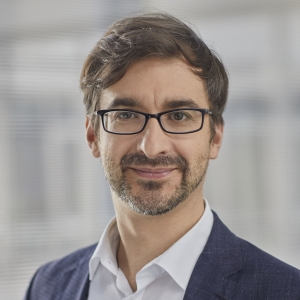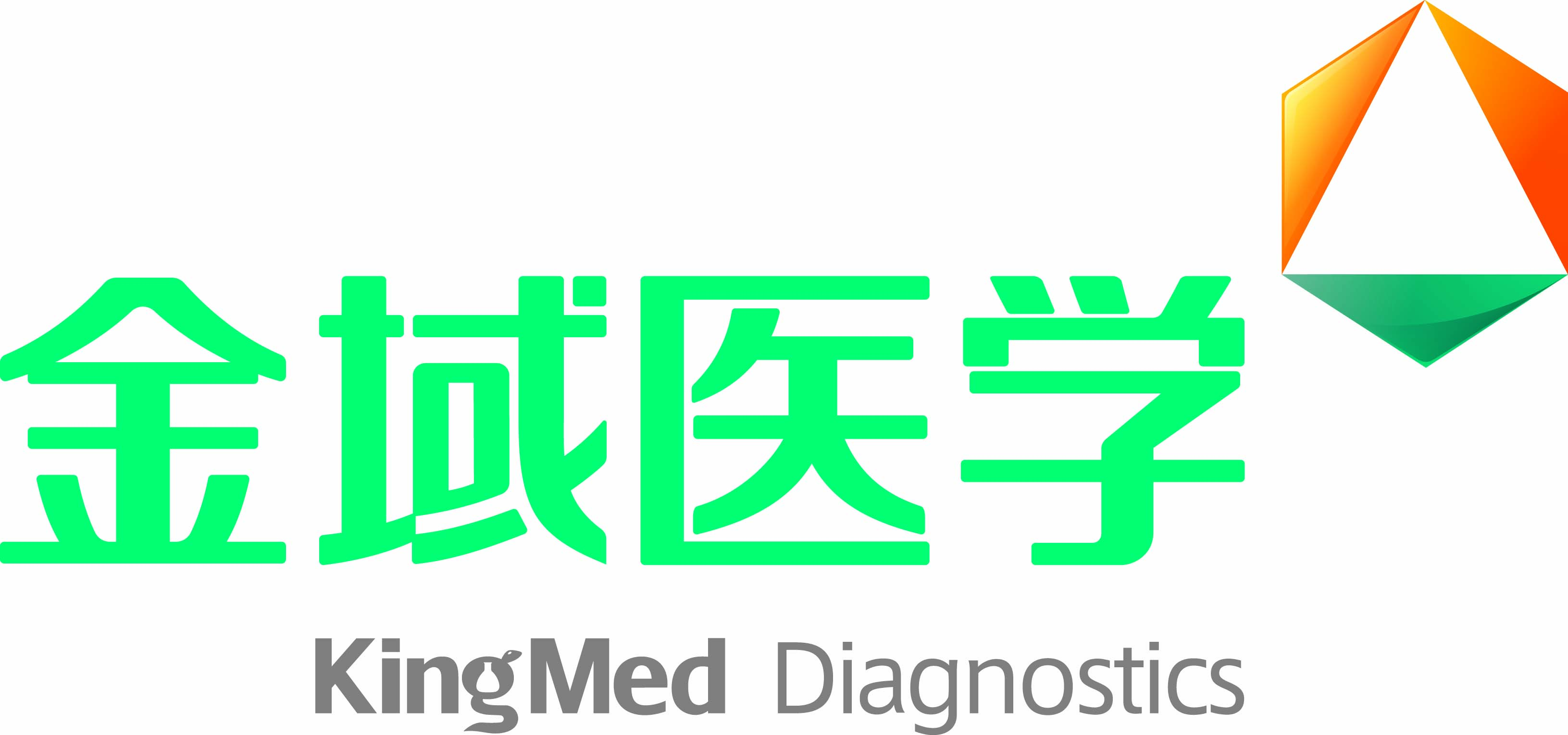Driving Next-Gen Servitization Models for the Energy Sector

Driving Next-Gen Servitization Models for the Energy Sector
Servitization for Energy Sector
A Pathway to Sustainable Growth, 2024
Scovan Engineering Inc. provides Engineering, Procurement, and Construction (EPC) and Product-as-a-Service (PaaS) solutions for oil and gas producers.
Partnering with Siemens Advanta allowed us to tap into an incredible opportunity to redefine what servitization means for the energy sector. By combining our expertise in engineering with Siemens’ digital and strategic capabilities, we’ve unlocked new possibilities for our clients and the broader market. Our collaborative output demonstrates the power of our unique strengths.
Small to mid-sized oil and gas producers face cost pressures, operational inefficiencies, and increasing ESG requirements, demanding innovative, service-based solutions.
- Fluctuating commodity prices and the need for capital efficiency are requiring leaner operational models.Servitization reduces operational risks while minimizing upfront capital expenditures, allowing operators to focus on continuous improvement and value generation through service contracts.
- The adoption of Industrial Internet of Things (IoT), Artificial Intelligence (AI), and big data analytics is revolutionizing operational efficiency.Companies that leverage the technology to reduce downtime, enhance maintenance strategies, and manage operational data will be positioned to lead the industry forward.
- Global pressure to reduce carbon emissions is pushing energy operators to integrate cleaner energy technologies and meet strict regulatory requirements.Real-time emissions tracking, carbon footprint management, and transparent sustainability reporting are becoming mandatory for survival.
Siemens Advanta and Scovan explored multiple servitization models and evaluated capital impacts for Oil & Gas companies
- Product-as-a-Service (PaaS): Instead of traditional equipment sales, service contracts that include predictive maintenance, digital monitoring, and performance guarantees shift costs from capital expenditures to operational expenditures. This model provides operators with predictable cash flows while maintaining asset reliability.
- Lifecycle Asset Management: Leveraging digital twins and predictive analytics, companies can manage the complete lifecycle of assets, from design and commissioning to decommissioning. This reduces the total cost of ownership and maximizes uptime and environmental performance.
- Outcome-Based Services: Operators and service providers can agree on specific performance metrics, such as emissions reductions or minimized downtime. This shifts the focus from equipment delivery to achieving measurable operational outcomes.
Servitization platforms deliver reduced downtime and operational costs, improved ESG compliance, and scalable models tailored for diverse operator needs, enabling cost-effective growth.
- Siemens’ predictive maintenance platform and Scovan’s PadX improve asset performance and extend equipment lifecycles by reducing downtime through real-time data insights. A midstream operator implementing predictive maintenance achieved a 20% reduction in unplanned downtime, saving millions YoY.
- Scovan’s HipVap and Siemens’ Insights Hub platforms provide real-time emissions tracking and sustainability management. This enables operators to meet regulatory demands while improving energy efficiency and reducing costs in parallel.
- Our connected equipment capability streamlined data management, compliance reporting, and decision-making processes. This enabled real time asset utilization monitoring, schedule updates, and automated reporting.
Our work with Siemens Advanta has been a game-changer. Together, we’ve developed innovative, service-based solutions that align with the evolving needs of our customers. It’s partnerships like this that show how much we can accomplish when vision and capability come together. We’re proud of what we’ve achieved and excited for what’s ahead.

Organizational Transformation Management

Organizational Transformation Management
Deep expertise on how to transform organizations
Siemens Advanta supports throughout the transformation starting with definition of the aspiration level and levers, setting up the governance and – striving for sustainable change – consulting and supporting in all aspects of the execution.
Siemens Advanta aspires to support its customers from the beginning of their transformation journey and goes beyond standard change management. Based on a sound organizational understanding and domain know-how, transformation targets are continuously checked against formal and informal structures and capabilities. In the execution phase, our customers benefit from vast (methodological) experience that enables us to set up the right governance and achieve sustainable change by putting your people in the center of our efforts.
- Organizational analysis against transformation targets
- Change impact analysis
- Governance and project/ program set-up
- Transformation/ change roadmap including comprehensive stakeholder management
- Realistic transformation targets
- Organizational alignment through all hierarchies
- Clearly evaluated change impact for each target group
- Fast, comprehensive, and monitored adoption through integrated change management
Our industry leaders



Creation of Digital Twin to Drive Decarbonization in Birmingham

Creation of Digital Twin Platform to Drive Decarbonization in Birmingham
Siemens Advanta is developing a Digital Twin platform for Birmingham as part of the UKRI Innovate UK funded project – Digital InnovAtion TransfOrMatIve Change (DIATOMIC) programme, in partnership with University of Birmingham (UoB), Birmingham City University (BCU), and Aston University. This transformative initiative aims to foster informed decision making, ensuring the efficient allocation of resources and maximizing the impact of investments. By leveraging the power of the Digital Twin, we are dedicated to propelling Birmingham towards a more sustainable and prosperous future.
This groundbreaking project is set to establish an exemplary and sustainable working and living ecosystem, setting new standards for net zero practices and sustainability, pushing the boundaries of current ambitions and supporting the vision for the net zero transition of Birmingham.
A key aspect of this approach involves collaborative efforts with residents and local businesses to ensure that the development caters to the needs and aspirations of all community stakeholders. The DIATOMIC accelerator program serves as an exemplar of collaboration by Connected Places Catapult and partners Aston University, Birmingham Chambers of Commerce, Birmingham City Council, Birmingham City University, Digital Birmingham, Transport for West Midlands, University of Birmingham, West Midlands Combined Authority, Siemens Advanta, and other industry innovators to position Birmingham as a leading, sustainable city.
To transform Birmingham into a leading digital and sustainable city, our clients sought a cloud-based Digital Twin platform to enable monitoring and analysis of key digital twin use cases and serve as a foundation to empowers businesses, public entities, and individuals in shaping the city's future by leveraging data-driven insights.
Siemens Advanta combines global expertise with deep domain know-how and co-creation experience to create an open, scalable Digital Twin platform with defined pathways to clean energy and net zero emissions.
- Advisory
Discovery of stakeholder priorities, requirements gathering and consolidation to formulate prioritized, value-driven use cases. Augmenting project teams with domain and technology expertise.
- Solution Design
Co-designing a digital twin base platform to realize prioritized use cases in the areas of traffic impact and air quality, energy systems and infrastructure, and hydrogen fuel cells, utilize modular cloud technologies, and enable future scalability and growth.
- Solution Implementation
Deploying a scalable Digital Twin platform that enables the Digital Twin use cases.
The implementation of a Digital Twin mirroring Birmingham will empower local digital investment, promote the expansion of environmental enterprise and innovation, and provide insights for net-zero emissions, improved well-being, and economic opportunities through smart, data-driven solutions, supported by a collaborative forum for ongoing progress.
By creating a platform for innovation and sustainable practices, this initiative will significantly contribute to the economic growth of Birmingham and reinforce its reputation as a frontrunner in environmental stewardship.
This is a really important piece of work which is allowing the City of Birmingham to be pioneering in the development of city scale digital twins. The Birmingham Energy Institute has been extremely proud to help through driving this initial stage of development of the Birmingham Digital Twin which paves the way for a new way of understanding the complex urban environment and planning for the future.
This project follows the successful Digital Twin exploration phase for the Tyseley Environmental Enterprise District (TEED) funded by The Alan Turing Institute, where Siemens Advanta has already supported the University of Birmingham (UoB) Birmingham Energy Institute. This initial project has resulted in a comprehensive report that outlines the initial steps taken towards the creation of a digital twin.
Read full press release published by our client University of Birmingham:
Explore more
This project builds on BCU’s existing relationships with Birmingham City Council through the Big Data Corridor project which was focused on growing the region's clean tech, health tech and medical tech markets.
Read full press release published by our client Birmingham City University:
Explore more
Dive deeper: Related content
Our industry leader

13 Aspects of Sustainable Healthcare

13 Aspects of Sustainable Healthcare
13 critical factors to be considered for a sustainable healthcare system
Healthcare stands as one of the most critical sectors worldwide, yet hundreds of millions of people still lack access to essential health services. Sub-Saharan Africa and Southern Asia, in particular, face significant challenges in this respect. High healthcare expenses often deter individuals from seeking help for serious and chronic diseases. Nevertheless, investing in the healthcare industry to develop human capital is crucial for sustainable economic growth.
Establishing a robust health financing system is paramount for individuals grappling with financial constraints. This effort should be coupled with enhancements in healthcare infrastructure and workforce development, including medical professionals, to ensure the delivery of essential health services accessible to all.
Health challenges persist due to unavoidable factors such as disasters, mass migration, conflicts, climate change, global pandemics, and pollution. Additionally, unhealthy lifestyles, habits, and aging populations further compound these challenges. Both public and private health organizations are addressing these issues and underscoring the importance of implementing sustainable mechanisms that facilitate real-time feedback.
Building a healthcare system founded on sustainability not only ensures access to quality healthcare but also minimizes environmental damage and contributes to overall well-being.
Sustainable healthcare encompasses a multitude of facets, spanning from prevention to the delivery of care, and involves numerous stakeholders, including patients, healthcare providers, pharmaceutical companies, and policymakers. Here, we outline thirteen critical aspects of sustainable healthcare that must be considered and improved to ensure sustainable global health:
1. Preventive Care
This is a foundational aspect of sustainable healthcare. Efforts should be directed towards preventing diseases and promoting healthy lifestyles, as this is more cost-effective and results in better health outcomes. In smaller populations, effective methods to inform and change behavior can be successfully studied, as demonstrated in Iceland. Over two decades, a program tailored for adolescents reduced the percentage of 15-16-year-olds drinking alcohol from 42% to 5%, and smoking from 23% to 3%.
The biggest impacts on preventive health measures are well-known. Factors such as excessive consumption of unhealthy food (e.g., processed food with high sugar, fat, and salt), lack of exercise, smoking, and alcohol are the main causes of "civilization diseases" like heart attacks, strokes, diabetes, and lung cancer, which pose significant costs to society and individuals. No treatment will ever be as sustainable as prevention. Education and technology will be crucial to support the necessary behavioral changes.
The challenge is urgent. For example, the global population with diabetes is expected to rise by 51%, from 463 million people (9.3%) to 700 million (10.9%) by 2045, primarily in cities and richer countries. We need more pilot projects to improve people's health behavior and better global best practice sharing about what works and what doesn't.
2. Accessible Care
Healthcare should be universally accessible, ensuring that no one is left behind. This includes providing care to the most vulnerable populations and those living in remote or underserved areas. From a population health perspective, low-level primary care is much more important than high-end specialized treatment for improving overall life expectancy. Many diseases can be effectively treated with low-cost medications, such as those for high blood pressure. Therefore, it is crucial to have accessible primary care to detect and treat many common health problems. Technology, such as AI, sensors, and tests, will be a great help in lowering costs and making care more accessible.
3. Affordable Care
Cost is a major barrier to healthcare for many people. Sustainable healthcare should be affordable to all, irrespective of their economic condition. With scientific progress, more diseases will become treatable and even curable, leading to rising costs, no matter how well-designed the health system might be. The challenge remains to make the “biggest bang for the buck,” i.e., to implement metrics for rational decisions on where to allocate scarce resources best. New treatments are always more expensive, and sufficient funding is needed for pharmaceutical companies to invest in further research. Often, this means a trade-off between rising costs in the short run and potentially better treatments in the long run, which will become affordable after patent expiration. The way of the “blockbuster” drugs shows that they make pharma companies wealthy for a while and then lead to cheap generics that can improve healthcare for all in need. In some cases, such as new genetic treatments that might cure diseases like sickle cell, the costs may be high in the short run yet offer great promises in the long term. A combination of governmental policies and competitive elements delivers the best results, clearly showing that free trade alone cannot be successfully applied to healthcare.
4. Quality of Care
Alongside accessibility and affordability, maintaining high standards of care is essential. Quality of care encompasses effective, safe, and people-centered services. Implementing clinical practice guidelines and protocols, quality improvement initiatives, and patient safety programs is crucial. The biggest impact will come from applying principles of evidence-based medicine. To gather more "real-world evidence," data from various sources such as patient feedback, behavior, sensors, tests, and genetic information need to be used. The challenge is to determine what works best, rather than relying on biased tradition or experience. Quality has two aspects: how the treatment is perceived by the patient (patient experience) and how well it works from an evidence-based, statistical, and economic viewpoint. Both aspects must be developed further, and technology will be crucial. AI will not replace physicians, but few will work in the future without its support to make the best possible treatment decisions.
5. Healthcare Workforce
Investment in a skilled, motivated, and well-distributed healthcare workforce is crucial. This includes doctors, nurses, and other healthcare professionals. One of the key challenges is that work in healthcare is often harder and less well-paid than in other fields. There is a lack of healthcare personnel in most countries, largely due to the lower attractiveness of day-to-day work. While working in healthcare has a high reputation, employee satisfaction is often far from sustainable levels. There are many aspects to address this issue—often, what people want is a better work-life balance rather than having to make sacrifices that seem inevitable, such as working more than 50 hours per week, as 50% of US doctors do. AI, telemedicine, process improvements, and better working schemes are urgently needed to reduce the non-patient-related work, which comprises the biggest part of the daily schedule.
6. Technology and Innovation
The use of digital technologies, AI, and data analytics can improve diagnostics, disease management, patient monitoring, and supply chain management. Using Artificial Intelligence (AI) for precision medicine, Big Data for epidemiological studies, or Internet of Things (IoT) devices for remote patient monitoring are just some examples of how technology will make healthcare more efficient and, thus, more sustainable.
7. Pharmaceuticals and Medtech
Access to essential medicines, vaccines, and medical technologies is a key aspect of sustainable healthcare. Collaboration with pharmaceutical companies and medtech industries is important in this context. Emphasizing on Research & Development (R&D) for neglected diseases, ensuring the availability of Essential Medicines as per the WHO list, and encouraging innovation through technology transfer agreements or Public-Private Partnerships (PPP) are key aspects to support sustainability from a global health perspective. The recent initiative of the German biotech company BioNTech to provide local vaccine production "BioNTainers" to Rwanda is a lighthouse example of supporting underserved areas with vaccines.
8. Healthcare Infrastructure
Infrastructure such as hospitals, clinics, and labs should be evenly distributed, well-equipped, and efficiently managed. This also includes robust telemedicine capabilities. Building Health Information Systems (HIS) or Electronic Health Record (EHR) systems, optimizing healthcare logistics through Supply Chain Management (SCM) solutions, and creating smart hospitals are essential. As hospitals are the most resource-intensive treatment options, home or local care options, cooperating in a network with specialized clinics, are the preferred pathways. Hospitals will rely on energy efficiency with better-monitored infrastructure technology, focusing especially on heating and cooling, security, and flexibility, as well as optimized information delivery and monitoring from a cockpit perspective tailored to each user role, from hospital managers and doctors to patients and technical staff.
9. Environmental Sustainability
The healthcare sector itself should reduce its environmental footprint. This includes sustainable procurement, waste management, energy use, and supply chain practices. Implementing Green Health initiatives, reducing carbon emissions in line with the UN Sustainable Development Goals (SDGs), and using Life Cycle Assessment (LCA) to evaluate the environmental impact of healthcare products and services are important.
10. Healthcare Financing
Efficient, equitable, and sustainable financing mechanisms are needed to fund healthcare services. This could involve various strategies like public-private partnerships, insurance schemes, or innovative funding models. Instituting mechanisms such as Performance-Based Financing (PBF), or innovative funding models like Social Impact Bonds (SIBs), long-term value partnerships, or blended finance mechanisms are important. Exploring health insurance models, such as community-based health insurance, and decentralization schemes as seen with the NHS or the Danish model, to build new “superhospitals” can be a way forward.
11. Integrated Care
An integrated, patient-centered approach that coordinates care across different levels and providers can significantly improve outcomes and efficiency. Developing coordinated care models such as Accountable Care Organizations (ACOs) or Patient-Centered Medical Homes (PCMH) can be instrumental in implementing care pathways and transition-of-care models for chronic conditions.
12. Health Literacy
Educating individuals and communities about health and healthcare can empower them to take charge of their own health and make informed decisions. Implementing health education programs that apply principles of the Health Belief Model (HBM) or Theory of Planned Behavior (TPB) is essential. Promoting digital health literacy in the age of eHealth and mHealth can be effectively achieved by utilizing the possibilities of digital interactions and AI.
13. Policy and Governance
Good governance, robust policy frameworks, and strong regulatory systems are crucial for ensuring all other aspects of sustainable healthcare. Ensuring policy coherence through Health in All Policies (HiAP) approach, and enforcing strong regulatory systems such as Good Manufacturing Practices (GMP) in pharmaceuticals or Quality Management Systems (QMS) in healthcare organizations are essential. Key aspects of sustainable health will be driven and influenced by governmental bodies e.g. on an European level (e.g. European Green Deal), US, Chinese or Indian level, influencing smaller countries and fundamentally improving health for their citizens.
Based on these aspects, it is evident that building and maintaining sustainable healthcare systems is necessary for addressing global health challenges effectively. From preventive care and accessible services to technological innovations and environmental sustainability, there are various challenges to face along the way.
Adapting new technologies and digital solutions in the healthcare industry will surely make our lives more efficient and reduce wasted time and resources, resulting in better healthcare systems. Efficient and equitable healthcare financing mechanisms, coupled with strong policy frameworks and governance structures, are fundamental for sustaining healthcare systems in the long term and ensuring that they remain resilient in the face of evolving health challenges.
The path towards sustainable healthcare demands collective commitment and strategic action. By prioritizing prevention, accessibility, and innovation, we can build resilient systems that promote health equity and environmental stewardship for future generations.
Industry experts



Scaled Agile Transformation

Scaled Agile Transformation
Scaled agile transformation for more speed, & flexibility
Siemens Advanta supports its clients in Scaled Agile Transformation, to speed up the operating model of clients’ ecosystems for IOT solutions and new digital services. Scaled Agile is the steadying force in uncertain times. It enables 50% faster time-to-market and 30% higher cost efficiency in development of innovative products. Siemens Advanta offers a stepwise approach for efficient transformation based on north star clarification, breakthrough targets and continuous success measurements. The proven approach consists of three phases: Align on vision state, empower transition, and implement & guide transition.
- Baseline analysis of the status quo
- Consulting and coaching
- Training incl. leadership-training
- Progress and success monitoring
- Proven approach for effective and accelerated transition
- 50% faster time to market
- 30% higher cost efficiency
- 20% increase in decision power
- 30% more engaged and motivated employees
Our industry leaders


Smart Factory Intralogistics

Smart Factory Intralogistics
Operational excellence, automation, and digitalization solutions
Siemens Advanta supports its clients in identifying the digital technologies that can enhance logistic processes in their factories. They provide smart solutions that best fit the logistics processes and help clients identify suitable technologies to change operational processes.
- Performance improvement of you end-to-end intralogistics value chain
- Tool box to drive digital transformation of logistic processes
- Logistics set-up
will be derived from strategy requirements - Right arrangement of intelligent solutions in operations
- Proven impact in our projects
- Reduce your process time by up to -30%
- Reduce your lead time by up to lead time reduction -20%
- Increase your delivery reliability up to +25%
- Help you to optimize your inventory by up to -40%
Our industry leaders



NIS2 Compliance

Cybersecurity: NIS2 Compliance
Get ready for NIS2 compliance: A cyber resilience roadmap
NIS2 sets new cybersecurity requirements in the EU, requiring vital sectors to upgrade protection against growing threats. Compliance is mandatory to avoid penalties and secure operations and the October 2024 deadline urges immediate action. Siemens Advanta offers expert guidance and tailor-made solutions to ensure you meet the NIS2 requirements as well as enhance your cybersecurity posture.
- Awareness
- Leadership training: In-depth NIS2 awareness customized for senior leadership, outlining directive impacts and management responsibilities.
- Assessments
- Risk identification: Targeted workshops to pinpoint cybersecurity risks and threats.
- Compliance gaps: Assessments to identify compliance shortfalls, creating transparency and actionable plans.
- Transformation
- Achieve compliance: Effectively manage and coordinate different tasks to meet the directive's requirements through our comprehensive action plan.
- Enterprise transformation: Lead organizational change, enhancing cyber resilience and ensuring ongoing compliance for not only NIS2 but also future regulations.
- Regulatory adherence: Achieve and maintain full NIS2 compliance.
- Supply chain compliance: Ensure your supply chain meets NIS2 requirements, enhancing trust and reliability with your customers.
- Enhanced cybersecurity: Fortify defenses, mitigate risks, and safeguard against cyber threats.
- Leadership empowerment: Equip leaders with knowledge and tools for informed decision-making.
- Operational resilience: Build a robust framework for continuous improvement and long-term cyber resilience.
Related content
Our industry leader

Agile Software Development

Agile Software Development
Sprint-based development of custom software solution
Siemens Advanta creates a software solution for the client’s business need, in an agile manner. Together with the client’s team, Siemens Advanta goes through the stages of problem discovery & target setting, details & aligns the objective, prototyping, solution design to business needs, proof of value, proof of real impact, productization, scaled implementation roadmap, and holistic scaling, including change management.
- Cooperative identification and assessment of problem statement and business demand
- Joint alignment of hypothesis and goal definition
- Agile sprint-based development of custom software solution
- Iterative validation of progress and achievements
- Tailored to client’s needs
- Transparent pricing model
- Co-creation approach to identify & validate business vision as basis for productization
We have thousands of developers working on the following topics:
- Vision Refinement Scoping
- Feasibility Studies
- Business Opportunity Development
- User Story Definition
- Technology Assessment
- Ref. Architecture
- Digital & IoT Strategy
- Design Thinking
- UX Design
- Solution Prototyping
- Conceptual Design
- Concept Validation
- Requirement Eng.
- UI Design
- Agile Project Setup
- Solution Architecture, Design & Customization
- Application Design & Development
- Systems Design
- Cloud Services
- OT Connectivity & Integration
- IT System Integration
- Platform Integration
- Enterprise Integration
- IT & OT Security
- Cybersecurity
- Machine Learning
- Computer Vision Analytics
- Predictive Maintenance
- Anomaly Detection
- Root Cause Analysis
- Data Visualization
- Real-Time Analytics
- Operate IoT Services and Solutions
- Maintaining Service Level Agreements (SLA)
- Continuous Solution Improvement
- Technical Support
- Customer Value Identification
- Customer Enablement
- Process Management
- Risk Management
- Quality Management
- Contract/ Subcontract Management
- Change Management
- Procurement Support/ Economies of Scale
Our industry leaders


Green Hospital

Green Hospital
Building the future: Sustainable hospitals leading the way
In an era where health meets environmental consciousness, sustainability is getting more and more important. A study revealed that the CO2 emissions from healthcare in the world’s largest economies account for about 5% of their national carbon footprints, this is a larger share than either aviation or shipping.
Hospitals constitute a substantial portion of emissions within the healthcare industry. 64 % of energy consumption of all healthcare facilities is from large hospitals. To illustrate this further - one hospital bed in Germany requires more than twice the energy as an average household generating 64.4 tCO2e vs. 16.4 tCO2e, respectively. (Sources: MDPI; Universitätsklinikum Freiburg; Universitätsklinikum Freiburg; Our World in Data; Statista)
The primary contributors to greenhouse gas emissions within hospitals' operations are predominantly situated within their supply chains, necessitating targeted efforts for successful hospital decarbonization. According to the United Kingdom's National Health Service (NHS), a significant portion of the carbon footprint, accounting for 62%, is attributed to the supply chain, while only 24% of the hospital's carbon footprint falls under their direct control. (Source: The lancet)
Sustainable hospitals demand innovative solutions to embrace eco-friendly practices, reduce waste, cut energy bills, and improve patient care. For instance, sustainable hospitals can achieve energy savings through efficient lighting, HVAC systems, and renewable energy sources. Additionally, sustainable hospitals often report higher patient satisfaction rates.
What's more, legislative support, driven by both sustainability and cost advantages, is propelling the demand for sustainable hospitals. The NHS in the UK, for instance, is pioneering an ambitious plan to become the world's first Net Zero National Health Service by 2045, aiming for an 80% reduction by 2039, and has earned recognition from the WHO as a leader in sustainable healthcare. Meanwhile, the U.S. Health Sector Climate Pledge is actively promoting the transition to sustainable hospitals, targeting a 50% reduction in GHG emissions by 2030 and net-zero hospitals by 2050, with 1,080 hospitals (15% of U.S. hospitals) already committed. This legislative pressure urges swift, cost-effective sustainable hospital initiatives to cut emissions. (Source: NHS England; HHS)
of the national carbon footprints in the world's largest economies are attributed to CO2 emissions from healthcare.
Source: Universitätsklinikum Freiburg
the primary contributors to greenhouse gas emissions in hospital operations are predominantly situated within their supply chains.
Source: United Kingdom's National Health Service (NHS)
of energy consumption of all healthcare facilities is from large hospitals.
Source: Universitätsklinikum Freiburg
more energy needed for one hospital bed in Germany compared to an average household's bed.
Source: Our World in Data
Sustainable hospitals demand innovative solutions to embrace eco-friendly practices.
Siemens has previously implemented substantial solutions to enhance sustainability in the healthcare sector:
- One success story by Siemens is exemplified by the recent Pfizer facility in Germany achieving a 40% increase in energy efficiency through the integration of Siemens technology and services. (Pfizer).
- Siemens further enhanced energy efficiency at Taiwan's Development Center for Biotechnology (DCB) by introducing advanced controls for chilled water pumps and cooling water pumps, resulting in an impressive energy savings rate of 21.7%. (Taiwan Biotechnology Development Center).
- Another notable success story occurred at the Reutte Hospital in Austria, where Siemens transformed Reutte into a sustainable hospital by renovating the heating system and using a photovoltaic system on the roof with target energy savings of more than €150,000 per year (Reutte).
Our 3-step process for the "Green Hospital of the Future" initiative
Phase 1: Assessment - This phase involves diagnosing the patient's needs and requirements.
Phase 2: Conceptualization - Here, we create a comprehensive treatment plan based on the assessment.
Phase 3: Program Implementation - In this final phase, we execute the treatment plan and continuously monitor the patient's progress.
Industry experts



Kingmed Diagnostic

A Strategy and Implementation Plan to Define Future Independent Clinical Laboratories Industry
Kingmed Diagnostic

Guangzhou KingMed Diagnostics Group Co., Ltd. (listed in China) established in 2003, is regarded as the pioneer and leader of the Independent Clinical Laboratories (ICL) industry in China. As of 2019, the company has 18,750 employees. By following the international quality standards and independent innovation, KingMed provides more than 2,700 tests for clinical and scientific research purposes, which represents one of the most comprehensive and integrated test menus in China. Its lab testing reports are accepted by more than 50 countries and regions worldwide. KingMed has 37 laboratories set up in the mainland of China and Hong Kong, covering 90% of the Chinese population. It is now providing medical testing services for more than 23,000 medical institutions, with an annual specimen amount of over 70 million.
Need clear digitalization strategy and innovation focus for sustainable development.
- Independent Clinical Laboratories businesses to be digitalized
- Innovation acceleration needed to drive new business growth
- Organizational and people enablers needed to implement digital strategy
E2E digital solutions to digitalize Independent Clinical Laboratories businesses and to monetize healthcare data.
- Leverage Industry 4.0 domain know-how and core value chain concepts as basis for adoption in to Independent Clinical Laboratories industry
- Incorporate expertise from Siemens Healthineers and expert networks with many years of digitalization innovation capability
- Co-create with clients from all levels to generate consensus and committment
A sound vision, blueprint and concrete implementation plan for Diagnostics 4.0.
- Independent Clinical Laboratories 4.0 concept and strategy defined, being the first to launch in the market
- Digital blueprint defined
- 6 end-to-end business digitalization areas with ~150 applications
- 6 medical data-driven digital business innovation fields with ~30 pilot areas
- Organizations appointed and digitalization pilots realized
Siemens is one of the paradigms of German manufacturing. Its industrial roots resonate with the culture of KingMed. By benchmarking leaders in various verticals and by leveraging Siemens’ digital experience as well as our diagnostics intelligence, we are building a role model of diagnostics 4.0 with international standards and Chinese characteristics
Dive deeper: Related content
Pagination
- Page 1
- Next page


 Contact Us
Contact Us






